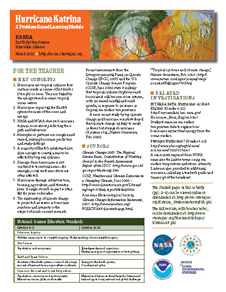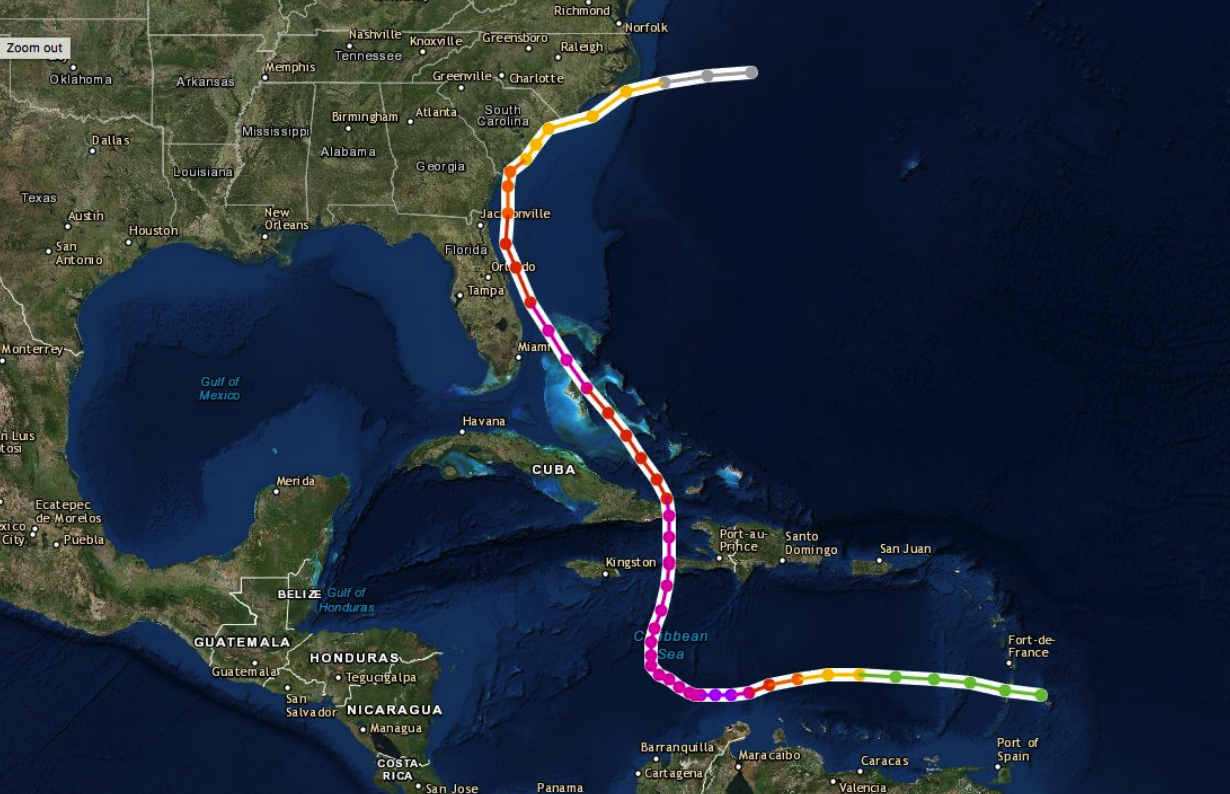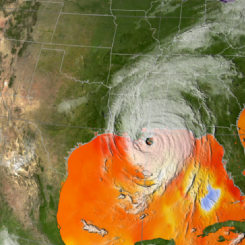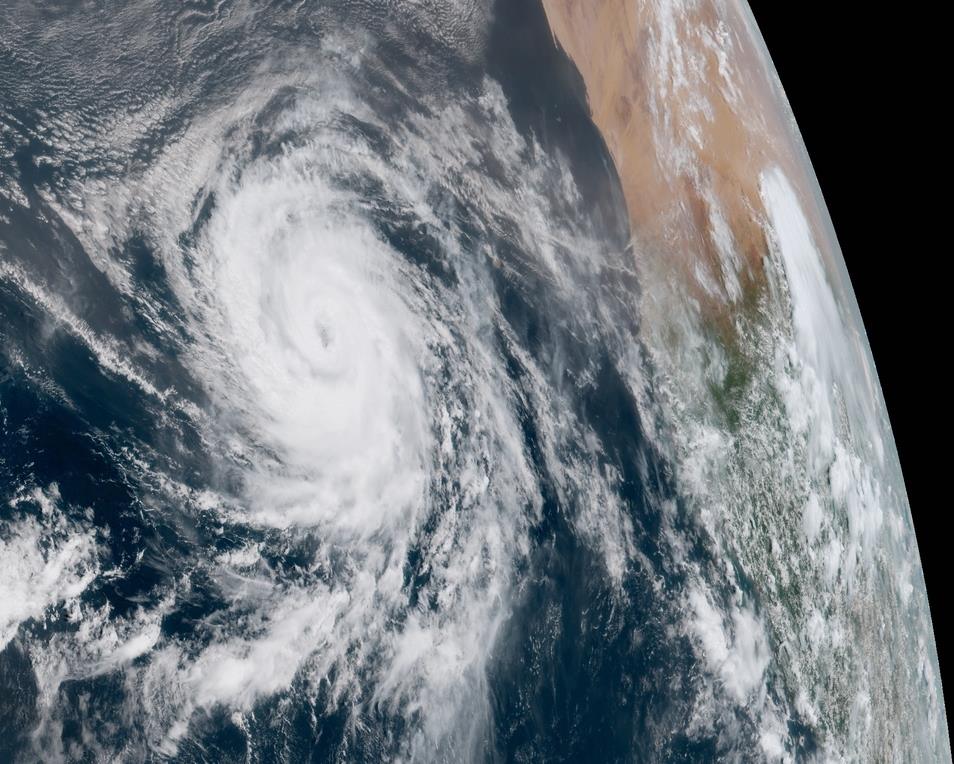Lesson Plans
Hurricane Dynamics Implementation Sequence
Overview
The Hurricane Dynamics Implementation Sequence provides a series of lessons and activities for students to learn how hurricanes affect the different spheres within the Earth System by using maps and other geographic representations, tools, and technologies to acquire, process, and report information from a spatial perspective.
Materials Required
- Hurricane Dynamics Implementation Sequence
- Student materials will vary based on the selected lessons
Procedure
Teacher Directions:
The Implementation Sequence is a guide to get you started with teaching your students about how hurricanes form and the effects they have on our environment. The lessons listed are for a five-day series.
- You will find one activity for each day.
- Day 1: Lesson Plan- Tropical Cyclone Counts- Compare Data Displays
- Day 2: Lesson Plan- Hurricane Sandy to Scale
- Day 3: Mini Lesson- Hurricane Harvey's Effect on Soil Moisture
- Day 4: Lesson Plan (day 4 and 5)- Hurricanes as Heat Engines
- Day 5: Lesson Plan (day 4 and 5)- Hurricanes as Heat Engines
- The duration of the lessons varies from 30 to 50 minutes.
- The lessons include NGSS Disciplinary Core Ideas (DCIs), learning objectives, and activities/assessments.
- The sequence provides a list of additional resources for you to use as an extension or modification to your lessons.
- To view the sequence in its entirety, print the Hurricane Dynamics Implementation Sequence.
Disciplinary Core Ideas:
- ESS2D: Weather and Climate
- ESS3B: Natural Hazards
- ESS3C: Human Impacts on Earth Systems
Crosscutting Concepts:
- Patterns
- Cause and Effect
- Scale, Proportion, and Quantity
- Systems and System Models
Science and Engineering Practices:
- Developing and Using Models
- Analyzing and Interpreting Data
- Using Mathematics and Computational Thinking
- Engaging in Argument from Evidence
- Obtaining, Evaluating and Communicating Information
- Analyze how a phenomenon changes with location
- Analyze NASA sea surface temperature data to use as evidence to explain a phenomenon
- Evaluate the usefulness of a model that shows the reach of a hypothetical hurricane
- How does a hurricane affect the different spheres within the Earth System?
- What are the effects of hurricanes on our communities?
- How can we use models to understand severe storms?
- How can we use math to characterize hurricanes?
|
Hurricanes are large, swirling storms with winds of 119 kilometers per hour (74 mph) or higher. That's quicker than a cheetah can run, which is the fastest animal on land. They are said to be the most violent storms on Earth. These storms are also called by other names, such as typhoons or cyclones, depending on where they occur. The scientific term for these storms is “tropical cyclone.” Only tropical cyclones that form over the Atlantic Ocean or the eastern Pacific Ocean are called "hurricanes”. Whatever they are called, tropical cyclones all form the same way. Source: My NASA Data| Hurricane Dynamics |
Hurricanes are the most powerful weather event on Earth. NASA’s expertise in space and scientific exploration contributes to essential services provided to the American people by other federal agencies, such as hurricane weather forecasting.
The National Oceanic and Atmospheric Administration and the National Hurricane Center (NHC) use a variety of tools to predict these storms’ paths. These scientists need a wealth of data to accurately forecast hurricanes. NASA satellites, computer modeling, instruments, aircraft and field missions contribute to this mix of information to give scientists a better understanding of these storms.
- Internet Required






